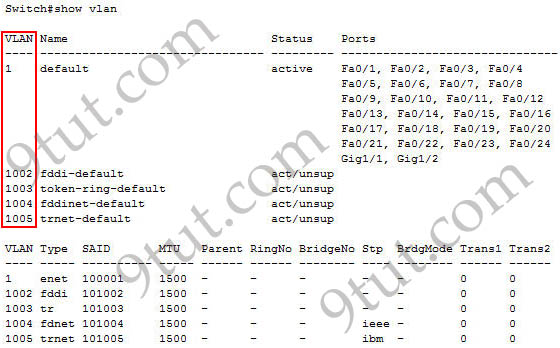CCNA – VLAN Questions
Note: If you are not sure about Virtual Local Area Network (VLAN), please read our Virtual Local Area Network VLAN Tutorial.
Question 1
Question 2
Explanation
Even VLAN 3 is not yet configured on the switch, we can set the switchport access vlan 3 command without no problem and it also displays when we type the “show running-config” command.
Question 3
Question 4
Question 5
Explanation
A “native VLAN mismatch” error will appear by CDP if there is a native VLAN mismatch on an 802.1Q link. “VLAN mismatch” can cause traffic from one vlan to leak into another vlan.
Question 6
Explanation
When using VLAN the number and size of collision domains remain the same -> A is not correct.
VLANs allow to group users by function, not by location or geography -> B is correct.
VLANs help minimize the incorrect configuration of VLANs so it enhances the security of the network -> C is correct.
VLAN increases the size of broadcast domains but does not decrease the number of collision domains -> D is not correct.
VLANs increase the number of broadcast domains while decreasing the size of the broadcast domains which increase the utilization of the links. It is also a big advantage of VLAN -> E is correct.
VLANs are useful but they are more complex and need more administration -> F is not correct.
Question 7
Explanation
For 802.1q encapsulation, the native VLAN must matched at both side; otherwise the link will not work. In this case the native VLAN of S1 is 1 while the native VLAN of S2 is 2.
Question 8
Explanation
Answer A is not correct because when a packet is received from an 802.1Q trunk, it always carries VLAN ID information in the VLAN tag portion so the switch does not need to look up its source MAC address table to determine the VLAN ID of that packet.
Question 9
Question 10
Explanation
VLAN 1 is the default VLAN on Cisco switch. It always exists and can not be added, modified or removed.
VLANs 1002-1005 are default VLANs for FDDI & Token Ring and they can’t be deleted or used for Ethernet.



